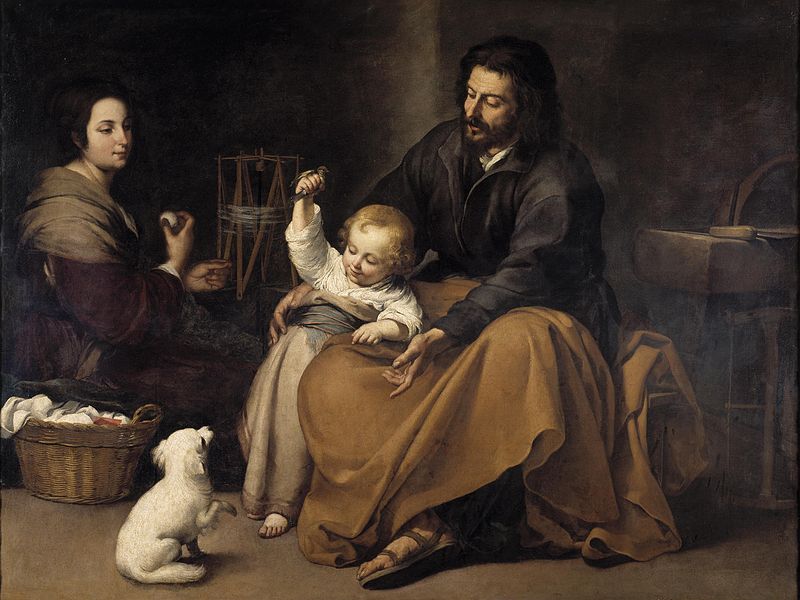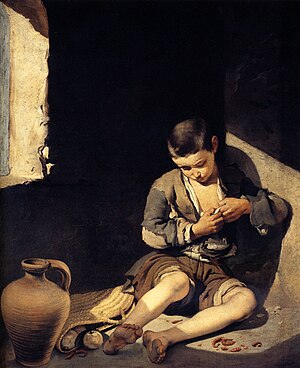 photo | National Gallery
photo | National Gallery
Over lo, these many centuries, Spain has been blessed by the gods of high culture with an unusually high number of Spanish painters and sculptors who have achieved international reknown – and even changed art history. And this year, the country is celebrating its #AñoMurillo – the 400th anniversary of the birth of a painter who these days tends to get lost amid names like Picasso, Goya, Velázquez, El Greco, Dalí, and Miró, but who until the 19th century was actually Spain’s most famous and influential painter. Let me introduce you, friends, to Bartolomé Esteban Murillo (1617-1682).
 image | VisitSevilla.es
image | VisitSevilla.es
Born (probably) and certainly raised, studied, mostly worked, and died in Seville, Murillo did a lot of religious themes (such as The Holy Family of the Little Bird, below, hanging permanently in Madrid‘s Prado Museum) and commissions for Catholic institutions. But he also also did quite a few images of contemporary people, especially children, and had quite a bit of influence on painters throughout Europe in the 17th and 18th centuries.
 photo | Museo del Prado
photo | Museo del Prado

In addition, you can visit sites such as the modest, two-storey Casa de Murillo (Calle de Santa Teresa 8), home to the painter during the last years of his life (now it’s also home to the Andalusia Flamenco Institute); the Quinta Angustia chapel and font where the artist was baptised, now part of the Santa María la Magdalena Church (Calle San Pablo 12); and the Museum of Fine Arts, which displays Murillo works such as San Vicente de Padua con el Niño (St. Anthony of Padua With the Christ Child). All testament to a man who remains truly one of Spain’s most illustrious painters.
More information in English at VisitaSevilla.es. Best fares from Best fares from the UK, from the US.

